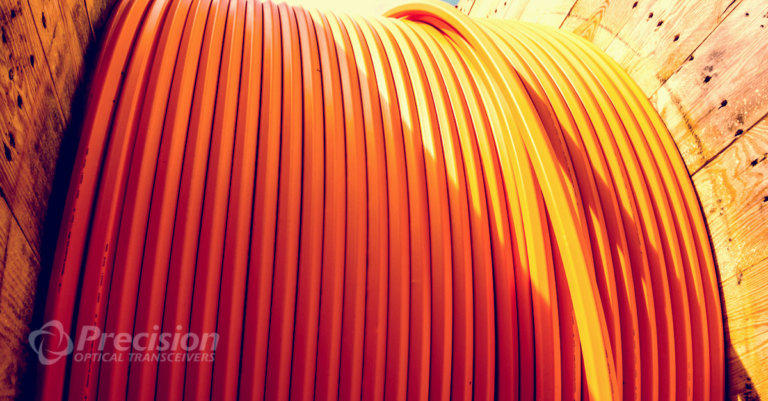
Cutting Through the Confusion: Fiber Optic Cables for High Speed Networking

The sheer number of devices geared toward building high-speed networking solutions can be overwhelming. There are several components to consider, starting with fiber-optic cables.
Inside the cable
Fiber-optic networking employs cables consisting of both single-mode fibers (SMFs) and multimode fibers (MMFs). Both fiber types feature advantages and disadvantages.
An SMF cable’s small core (typically between 8 and 10.5 micrometers) in relation to the cable’s protective cladding limits the distortion phenomenon known as modal dispersion, allowing information to be transferred over longer distances. MMFs, on the other hand, employ larger core diameters (typically between 50 and 100 micrometers) to enable the propagation of multiple light modes. As a result, MMFs are subject to bandwidth-limiting modal dispersion and are best suited for communication over short distances, such as local area networks (LANs) and data centers.
However, MMFs do not require the same tight level of light focus, or beam quality, as SMFs. This means that less expensive electronics, such as light-emitting diodes (LEDs) instead of laser diodes, can be used to transmit data. Alignment with connector types is also less critical, which simplifies connections.
Extending MMF reach
The advantages of MMF cables have prompted the industry to develop fiber types that extend their capabilities. Fiber types are identified by optical multimode (OM) designations, which currently range from OM1 to OM5. The higher the number, the greater the reach and bandwidth.
Cables made with OM1 or OM2 fiber use LED light sources, and can support rates ranging from 100 Mb/s over long distances (2,000 meters) to 1 Gb/s over medium distances (550 meters) to 10 Gb/s over short distances (less than 100 meters). However, because of modulation rate limitations on LEDs — in other words, how quickly the light source can be turned on and off — these types of cables cannot support rates above 10G. As a result, OM1 and OM2 are considered legacy cables and are not recommended for new installations.
The advent of high-speed networks has driven migration to cables made with OM3 and OM4 fibers. Both support vertical-cavity surface-emitting lasers (VCSELs), a cost-effective type of laser diode that can surpass LED modulation rates. Conveniently, the OM designation numbers for these two types of cables correspond to 10G transmission distances: OM3 can support up to 300 meters, while OM4 can support up to 400 meters. Both types also support medium distances at 40G, and 100 meters or more at 100G.
The newest fiber type, OM5, offers a similar range to OM4. However, it incorporates a new strategy designed to surpass the 100G mark — and move into next-generation optical networking.
New strategies
Early high-speed networking implementations placed multiple optical signals into parallel schemes. To create a 40G solution, for instance, one could use 4 x 10G in each direction — four 10G signals to transmit and four more to receive, involving a total of eight fibers. For 100G, one could use 10 x 10G for a total of 20 fibers. Following this protocol, a 400G deployment would require no less than 80 fibers.
Given the space constraints of high-density cabling networks, new strategies to reduce the number of fibers needed to achieve high-speed milestones are becoming widespread. One of these is to break with the factor-of-10 tradition and develop more efficient ways to increase speed: for instance, using 25G and 50G signals as building blocks. Another is a technology called shortwave wavelength-division multiplexing (SWDM), which combines multiple VCSEL-generated signals onto a single fiber.
Wavelength-division multiplexing itself has long been employed to achieve increased distance over single-mode fiber. Multimode fiber support for the technology, however, is a recent development for which standards are still being devised. OM5 fiber is specifically designed to incorporate SWDM, although the technology can be applied to OM3 and OM4 fibers as well.
Looking Ahead
Further development of standards for SWDM undoubtedly will have a significant impact on the industry as well as the related components designed for high-speed networking.






